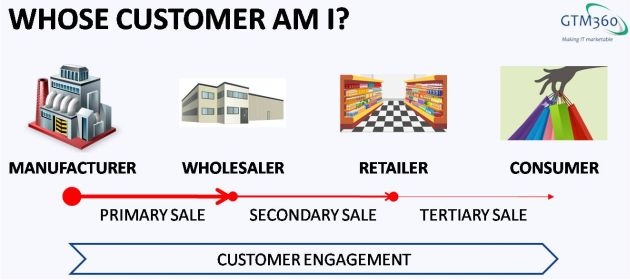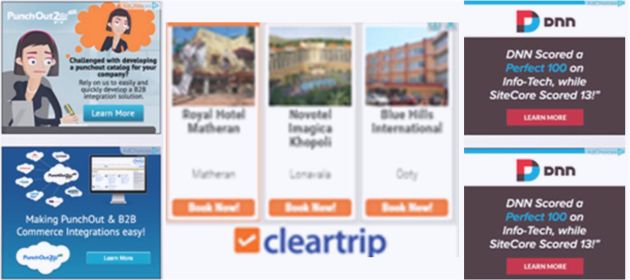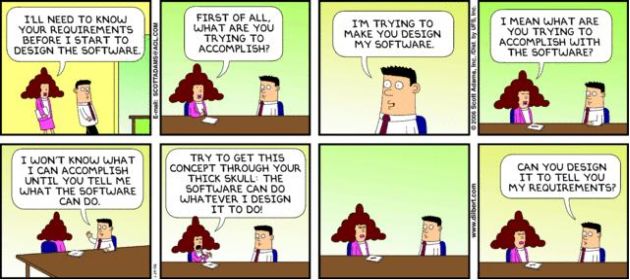I read the following question on Quora recently:
You buy a pen from a store. Then, are you a customer of that store or pen manufacturing company?
Normally, my answers on Quora are rather short.
After seeing this answer by Quora's founder @adamdangelo, I no longer worry about whether my replies are too terse. https://t.co/V6UqD1qinA
— Ketharaman Swaminathan (@s_ketharaman) January 4, 2016
Going by that standard, I should have simply written “Store” and left it at that.
But this question gave me the chance to let loose on some sales best practices like Secondary Sales and Tertiary Sales, and shamelessly plug one of our customers’ Customer Engagement software. I seized on the opportunity by writing this atypically long answer.
There are two perspectives to the answer. Legal / accounting, business.
Legal / Accounting Perspective
If you buy a CROSS pen from a STAPLES store, you’d probably like to be treated as a customer by both Cross and Staples. However, customer means sale, which means goods and money exchange hands. This happens only at the store, between you (i.e. consumer) and the storekeeper (i.e. retailer). So, you’re only a customer of the store (i.e. Staples).
Business
Consumer goods like pens are distributed via a multi-tiered distribution channel comprising of C&F Agents, Distributors, Wholesalers, Dealers and Retailers. In its simplest form, a channel has two members, namely, Wholesaler and Retailer, as illustrated in the following diagram:
As illustrated above, the manufacturing company (“Brand”) sells its product to a Wholesaler, who then sells it “down the channel” to a Retailer, which is the store where you bought the product. For the Brand,
- The sale from Manufacturer (i.e. itself) to Wholesaler is Primary Sale;
- The sale from Wholesaler to Retailer is Secondary Sale;
- The sale from Wholesaler to End Consumer is Tertiary Sale.
The unit of sale becomes smaller as you go down the channel. That is, Manufacturer sells in large volume (say, in crates) to Wholesaler; Wholesaler sells in smaller volume (boxes) to Retailer; Retailer sells in the smallest unit (piece) to Consumer. The declining thickness of the red arrows from left to right in the above diagram represents this common CPG industry practice. But I digress.
As soon as the Brand ships the goods to the Wholesaler, it recognizes revenue (and may even collect the payment in many cases) – regardless of whether the item lies in the Wholesaler’s warehouse / Retailer’s shelves or has been purchased by an End Consumer. Therefore, the
- Brand’s customer is the Wholesaler, and
- Brand has no obvious incentive to bother about Secondary Sales / Retailer or Tertiary Sales / Consumer.
Over time, #1 has remained intact but there has been a sea change in #2.
Competition has heated up in many product categories. Consumers have a much wider choice compared to 10-20-30 years ago. If a Consumer buys more quantity of Brand B than Brand A, it’s no skin off the Retailer’s back: He simply replenishes more stock of Brand B than Brand A. The Wholesaler couldn’t care less, either: Many of them stock products from multiple brands, so what they lose in reduced volume of Brand A they can make up with the increased volume of Brand B. But Brand A has a big problem since its market share would dwindle if this change in consumer preference goes unchecked.
As a result, Brands can no longer afford to be blasé about what happens to their product after it leaves their factory gates. In other words, they must bother about Secondary Sales and Tertiary Sales now.
 And many of them have started doing that.
And many of them have started doing that.
Today, it has become customary for a Brand’s sales rep to go on joint sales calls with Wholesaler’s salespersons to Retailers to push their own brand (over competing brands), monitor shelf space for various products, and so on.
This practice has become so widespread that it has created a fast growing new category of software that help brands manage their secondary / tertiary sales process. Ziggy, one of the leading products in this space, is developed by a customer (Click here for more details).
Some Brands have started going one step further by reaching out to End Consumers and treating them as though they were their direct customers. While brands have always tried to influence consumers to purchase their products via mass media advertising, they’re now drilling down to a more granular level and trying to connect with consumers as individuals.
As a result, Brands which didn’t even know the names of their Consumers in the past are now trying to learn a lot more than just their identities in order to engage with them. This practice is called Customer Engagement. I’ve come across two brands running Customer Engagement programs in the recent past.
- Deodrant brand Adiction’s customer engagement campaign featuring “date with Sunny Leone” as the incentive to connect with end consumers. More at Drive Engagement With Error Messages!.
- Pharma company Allergan’s customer engagement campaign for a prescription drug. This is interesting considering that end consumers aka patients play no role in choosing the brand of a prescription drug. To find out the rationale of this campaign, see Big Pharma Turns To CEM For Cure.
Customer Engagement seeks to drive repeat purchase, boost brand loyalty and build customer advocacy. The new breed of Customer Engagement Management software helps brands and their consumers to enroll, engage and encash at scale. Click here to find out more about a leading CEM solutions provider (Disclosure: This company is our customer.)
From a legal / accounting standpoint, the Consumer was, and still is, a customer of the Retailer from where they buy a consumer product. They’re not a customer of the Manufacturer and don’t figure in its PL/BS.
However, from a marketing / business standpoint, the Consumer is increasingly being treated as though they’re a direct customer of the Brand.
So, if you get a call or email from the manufacturer of your favorite pen or soap out of the blue, don’t be shocked – it’s only a sign of their CEM organization burning the midnight oil to engage with you as though you were their customer!



